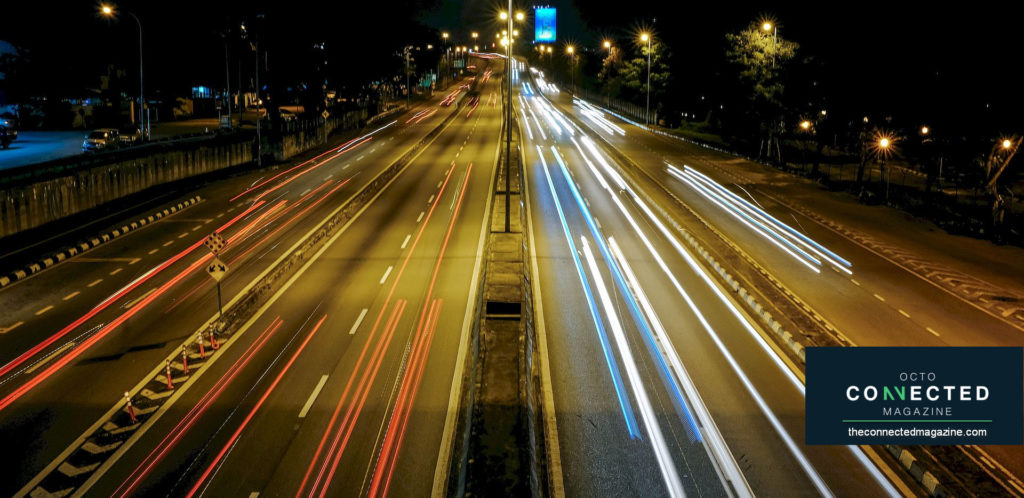
Magna used CES 2019 to showcase a full range of electrified powertrain configurations and to challenge the traditional approach to seating configuration at its “Welcome to Mobility” booth. Visitors found through a combination of full-scale demonstrations and a VR experience, how long road trips, cargo transport services and mobile meetings can be transformed through technologies like haptic massage seats, personal sound zones and multi-sensor biometric sensing.
There is a long history of innovation – in 2009 the company announced a vehicle-development partnership with Ford Motor Company to introduce a zero-emission lithium-ion battery electric vehicle (BEV). This became the Ford Focus BEV, which module / inverter and the transmission. Since 2012, Magna has supplied Volvo with the electrified rear axle drive system (eRAD) featured on the Volvo V60 and S60 plug-in hybrid models.
Automotive Industries (AI) journalist Clinton Wright – asked Swamy Kotagiri, Chief Technology Officer and President Powertrain, Magna International, about the company’s CES stand and the future of the car industry.
Kotagiri explained that at CES they showcased their view of the future where electrification, autonomy, and smart mobility are intertwined. He pointed out that it was also shown how multiple powertrain configurations with scalable electric power for hybrid and electric vehicles are applied to meet the varying consumer demands for efficiency, performance, and dynamics.
Additionally, he added, at CES was showcased LiDAR object detection in action on a display screen, which shows how Magna will master the complexity of autonomous driving through modular, scalable configurations for any vehicle architecture and autonomy scale.
In this interview, Kotagiri also highlighted that new seating configurations will enable vehicles to be used and shared differently by making them more adaptable to varying needs and infrastructures. Seat positioning will enable passengers to create a flexible space where drivers can move cargo, get work done and interact with accompanying passengers. As the functional basics will remain the same, Kotagiri said Magna is creating innovative seating solutions focused on delivering the ideal user experience. This approach has essentially helped the company to create seats that adjust to the consumer, instead of having the consumer adjust to seats.
Asked about the trends affecting vehicle design, Kotagiri said that with brilliant and disruptive thinking everywhere, the question isn’t about when things like driverless cars are coming or when all vehicles will be fully electric. He stressed that the question is about who is ready for these transformative shifts. In addition, the next generation of mobility and the requirements for mobility as a service are being defined by a new class of service providers (i.e. Lyft, Waymo, May Mobility, etc.).
Kotagiri expressed that cities are beginning to dictate requirements for powertrain (EVs) and autonomous capability. In many cases sharing of mobility and making it multifunctional is the next step in improving city access and passenger movement. The executive underscored that partnerships with OEMs and these future service providers provide valuable insight and data into use cases, future design requirements, and the direction consumers and customers are thinking for future mobility products and services.
Asked about Magna’s strategy in the development of powertrain technologies for electric and hybrid vehicles, Kotagiri highlighted that it is not just the impact of EVs, but rather the overall impact of the shift towards full electric. What was once six or so basic powertrain architectures (FWD, RWD, 4WD, AWD, AT, MT) will balloon to over 50 by 2025. He assured that Magna is focused on the development of scalable building blocks to support such proliferation. Especially important will be the building blocks for eMotors and inverters (48V and high voltage), as well as software.
He stressed that at Magna they have complete vehicle system knowledge through their vehicle engineering and assembly operations experience at their Steyr Group.
Consulted about the growth of the powertrains, Mr. Kotagiri explained that the expectation is that pure EVs will account for about 5% of the global sales in 2025, with an additional 10% in the HEV /PHEV space. About 33% will have 48V mild hybrid systems on board. This leaves the remaining 50% or so with traditional ICE engine-based powertrains.
In the next 3-4 years, Kotagiri stressed that the company expects to see the introduction and significant expansion of 48V Mild Hybrid systems, especially in Europe. The MHEV (Mild Hybrid Electric Vehicle) improves the operating efficiency of powertrains with ICE engines, thereby reducing CO2 emissions. For Europe, this will be an important feature to offset the effect of lower penetration of diesel as well additional driving functions/features such as electronic traction assist, highway speed engine-off sailing, and enhanced 4WD with front to rear torque vectoring to further improve stability.
Kotagiri underlined that Magna is ready to support its OEM customers with a developed portfolio of these new products. He stressed that the company also expects a significant proliferation of high voltage systems in passenger cars and light trucks. These systems will include High Voltage P2.5 Hybrid DCTs, again a scalable product where we simply install a higher power (75 kW for example), high voltage eMotor inside our base DCT transmission. This enables all the benefits of pure hybrid functionality, as well as plug-in hybrid capability when the OEMs install sufficient battery capacity to enable zero-emission operation for periods of 50 miles for example.
Kotagiri expressed that all OEMs globally will introduce full electric vehicles. The demand for such vehicles will especially be seen in China, where legislation for New Energy Vehicles (NEVs) will require EVs and PHEVs to be present in OEM fleets.